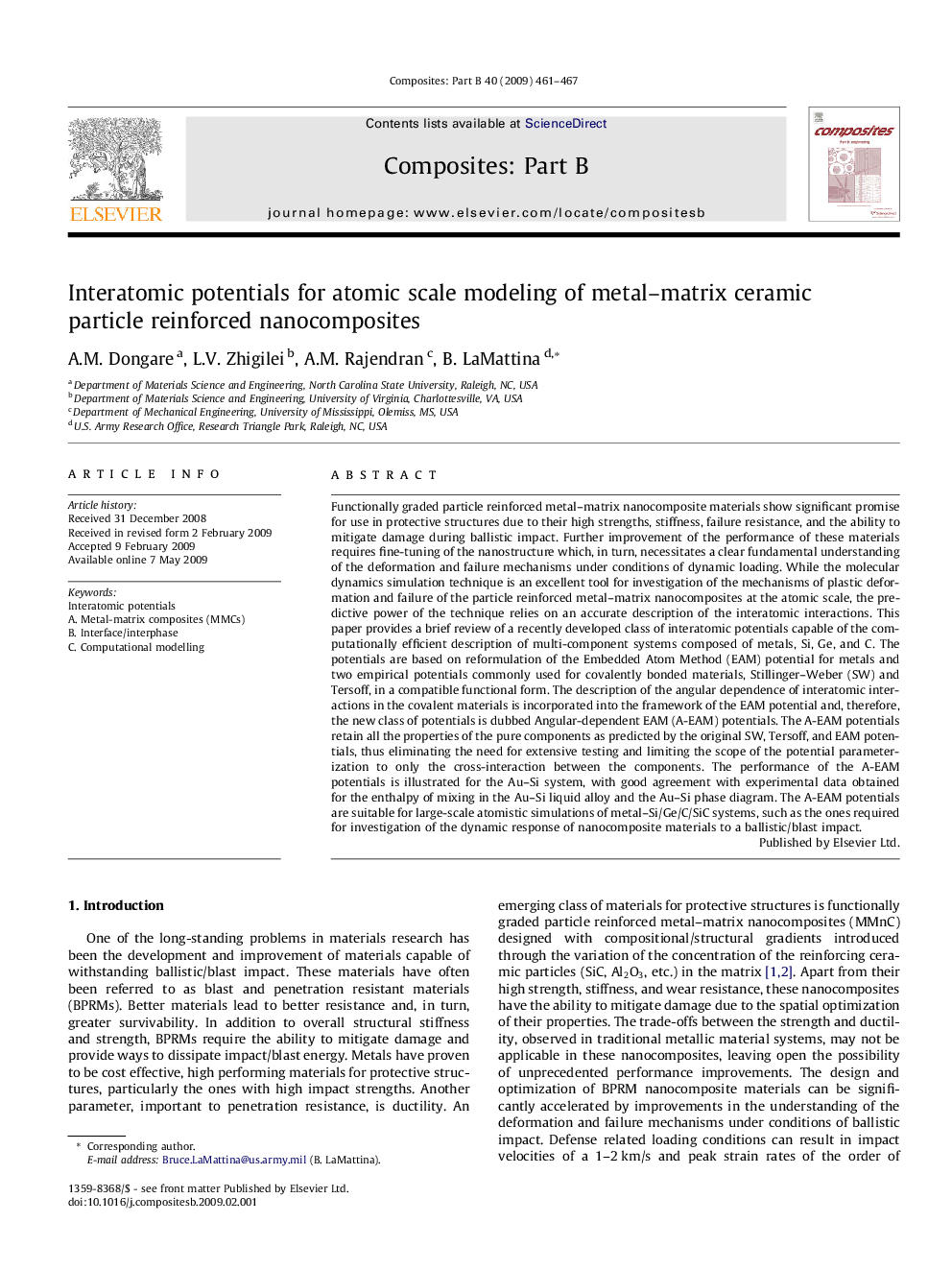| کد مقاله | کد نشریه | سال انتشار | مقاله انگلیسی | نسخه تمام متن |
|---|---|---|---|---|
| 819443 | 906559 | 2009 | 7 صفحه PDF | دانلود رایگان |

Functionally graded particle reinforced metal–matrix nanocomposite materials show significant promise for use in protective structures due to their high strengths, stiffness, failure resistance, and the ability to mitigate damage during ballistic impact. Further improvement of the performance of these materials requires fine-tuning of the nanostructure which, in turn, necessitates a clear fundamental understanding of the deformation and failure mechanisms under conditions of dynamic loading. While the molecular dynamics simulation technique is an excellent tool for investigation of the mechanisms of plastic deformation and failure of the particle reinforced metal–matrix nanocomposites at the atomic scale, the predictive power of the technique relies on an accurate description of the interatomic interactions. This paper provides a brief review of a recently developed class of interatomic potentials capable of the computationally efficient description of multi-component systems composed of metals, Si, Ge, and C. The potentials are based on reformulation of the Embedded Atom Method (EAM) potential for metals and two empirical potentials commonly used for covalently bonded materials, Stillinger–Weber (SW) and Tersoff, in a compatible functional form. The description of the angular dependence of interatomic interactions in the covalent materials is incorporated into the framework of the EAM potential and, therefore, the new class of potentials is dubbed Angular-dependent EAM (A-EAM) potentials. The A-EAM potentials retain all the properties of the pure components as predicted by the original SW, Tersoff, and EAM potentials, thus eliminating the need for extensive testing and limiting the scope of the potential parameterization to only the cross-interaction between the components. The performance of the A-EAM potentials is illustrated for the Au–Si system, with good agreement with experimental data obtained for the enthalpy of mixing in the Au–Si liquid alloy and the Au–Si phase diagram. The A-EAM potentials are suitable for large-scale atomistic simulations of metal–Si/Ge/C/SiC systems, such as the ones required for investigation of the dynamic response of nanocomposite materials to a ballistic/blast impact.
Journal: Composites Part B: Engineering - Volume 40, Issue 6, September 2009, Pages 461–467